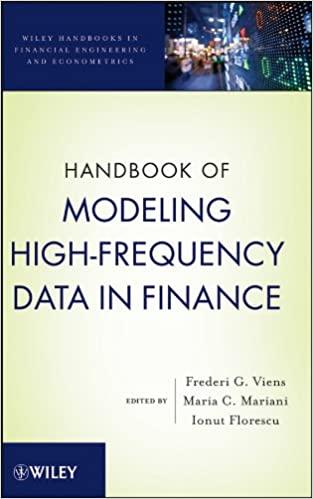




Retirement planning Personal Finance Problem Hal Thomas, a 25-year-old college graduate, wishes to retire at age 60. To supplement other sources of retirement income, he can deposit $2,000 each year into a tax-deferred individual retirement arrangement (IRA). The IRA will earn a return of 13% over the next 35 years. a. If Hal makes end-of-year $2,000 deposits into the IRA, how much will he have accumulated in 35 years when he turns 60? b. If Hal decides to wait until age 35 to begin making end-of-year $2,000 deposits into the IRA, how much will he have accumulated when he retires 25 years later? c. Using your findings in parts a and b, discuss the impact of delaying deposits into the IRA for 10 years (age 25 to age 35) on the amount accumulated by the end of Hal's 60th year. d. Rework parts a, b, and c assuming that Hal makes all deposits at the beginning, rather than the end, of each year. Discuss the effect of beginning-of-year deposits on the future value accumulated by the end of Hal's 60th year. a. If Hal makes annual end-of-year $2,000 deposits into the IRA, the amount he will have accumulated by the end of his 60th year is $ (Round to the nearest cent.) Perpetuities Consider the data in the following table. (Click on the icon here e in order to copy the contents of the data table below into a spreadsheet.) Annual amount $16,000 Discount rate 21% Determine the present value of the perpetuity. The present value of the perpetuity is $ . (Round to the nearest dollar.) Changing compounding frequency Using annual, semiannual, and quarterly compounding periods, (1) calculate the future value if $8,000 is deposited initially at 11% annual interest for 4 years, and (2) determine the effective annual rate (EAR). Annual Compounding (1) The future value, FVn, is $ (Round to the nearest cent.) Continuous compounding For the case in the following table, find the future value at the end of the deposit period, assuming that interest is compounded continuously at the given nominal annual rate. (Click on the icon here in order to copy the contents of the data table below into a spreadsheet.) Amount of initial deposit $3,800 Nominal annual rate, r 12% Deposit period (years), n 3 The future value at the end of the deposit period is $ (Round to the nearest cent.) Deposits to accumulate future sums For the case shown in the following table, determine the amount of the equal, end-of-year deposits necessary to accumulate the given sum at the end of the specified period, assuming the stated annual interest rate. (Click on the icon here in order to copy the contents of the data table below into a spreadsheet.) Sum to be accumulated $4,200 Accumulation period (years) 4 Interest rate 8% The amount of the end-of-year annual deposit is $ (Round to the nearest cent.)











